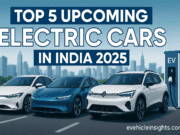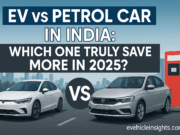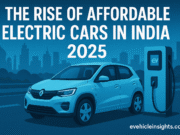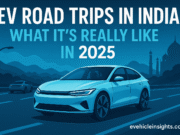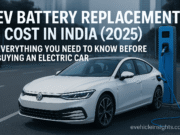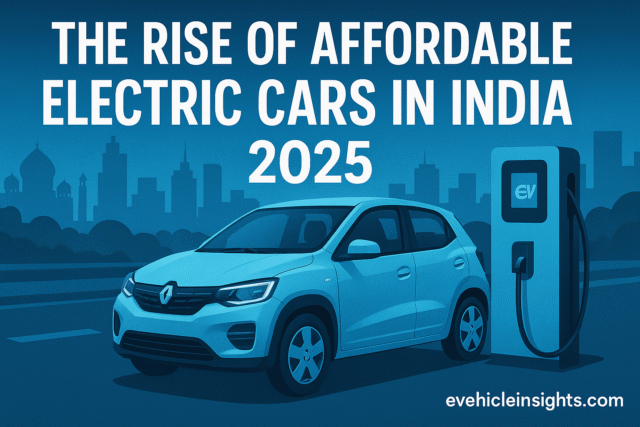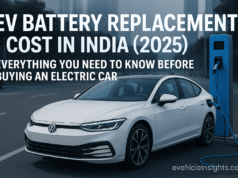TL;DR:
- Affordable electric cars under ₹10–15 lakhs are finally viable in India in 2025.
- Tata, MG, Mahindra, and startups are leading the charge with practical EVs for middle-class buyers.
- We deep dive into real-world pricing, features, range, running costs, and what compromises (if any) buyers need to accept.
- Includes a detailed comparison table of India’s most affordable EVs in 2025.
- Final verdict: 2025 might be the turning point where EVs go truly mainstream in India — not just for early adopters.
From Luxury to Livelihood: Why Budget EVs Matter More Than Ever
Let’s rewind just five years. In 2020, buying an electric car in India was like buying organic kale at a local mandi — niche, aspirational, and slightly impractical for the average middle-class family.
Fast forward to 2025? It’s a whole new voltage.
Affordable EVs are no longer science projects or stripped-down golf carts. They’re becoming daily drivers — school-run warriors, office commuters, and city slickers with real-world usability. And perhaps for the first time, price parity is within reach, especially with rising petrol prices and falling battery costs.
But what does “affordable” actually mean in 2025? And are these budget EVs truly worth it?
Defining “Affordable” in Indian Terms
In the Indian automotive context, affordability is not just a number — it’s a mindset. It’s about value for money, practicality, trust, and running costs.
As of July 2025, here’s the new definition:
| Budget EV Segment | Price Range |
| Entry-level EVs | Under ₹10 lakhs |
| Mid-budget EVs | ₹10–15 lakhs |
| Premium affordable EVs | ₹15–18 lakhs |
Any EV that falls under ₹15 lakhs, on-road, is now seen as “affordable” — especially if it saves money on fuel, maintenance, and gets the job done for daily city driving.
Who’s Buying These EVs?
- First-time car buyers in Tier 1 and Tier 2 cities
- Young professionals (25–35 age group)
- Retired or second-car families looking to ditch fuel costs
- Urban delivery fleet operators and app-based rental services
- Environmentally-conscious middle-class consumers
Why 2025 Is a Turning Point
Several forces have aligned to create the perfect storm for EV adoption in the budget segment:
- Government Push: FAME-II subsidies, state-level incentives (like zero road tax in Delhi and Maharashtra), and reduced GST (5%).
- Rising Fuel Costs: Petrol now hovers around ₹110 per litre in metro cities — making ICE vehicles costly to run.
- Better Battery Tech: LFP batteries are cheaper, safer, and offer longer lifecycle with fast-charging capabilities.
- Improved Infrastructure: Urban centers now average 1 fast charger per 10 km radius — up from 1 per 100 km in 2020.
Top 5 Most Affordable EVs in India (2025 Edition)
Let’s get into the nuts and bolts. Here are the top contenders in the affordable EV segment, updated for mid-2025.
| Model | Ex-Showroom Price (₹) | Real-World Range (km) | Charging Time | Battery Warranty | Unique Selling Point |
| Tata Tiago EV | ₹8.99 – ₹11.89 L | 210–255 km | 3–6 hrs (AC) | 8 yrs / 1.6 lakh km | Most value for city usage |
| MG Comet EV | ₹6.98 – ₹8.98 L | 160–180 km | 5–7 hrs (AC) | 8 yrs / 1.2 lakh km | Smallest EV in India |
| Mahindra eKUV100 | ₹9.85 – ₹11.45 L | 147–170 km | 6 hrs (AC) | 5 yrs / 1 lakh km | Entry SUV feel |
| PMV EaS-E | ₹4.79 – ₹6.79 L | 120–140 km | 4 hrs (AC) | 3 yrs / 60,000 km | India’s first micro EV |
| Citroën ë-C3 | ₹11.61 – ₹13.95 L | 260–320 km | 57 mins (DC fast) | 7 yrs / 1.2 lakh km | Longest range under ₹15L |
Comparing with Petrol Cars
Let’s break down cost of ownership over 5 years for a budget ICE car vs EV:
| Cost Item | Petrol Hatchback (₹10L) | EV (₹10L) |
| Fuel / Electricity | ₹5.4L (12 kmpl @ ₹110/L) | ₹0.9L (₹1/km avg) |
| Maintenance | ₹50,000 | ₹15,000 |
| Insurance | ₹70,000 | ₹80,000 |
| Road Tax & Reg. | ₹80,000 | ₹0 (in some states) |
| Total (5 yrs) | ₹7.4L+ running | ₹1.9L+ running |
Savings: ~₹5.5 lakh over 5 years — enough for a small family trip to Europe (or college fees).
The Charging Equation: Is It Practical?
Home Charging:
- 80% of owners charge at home overnight using a 15A plug.
- Costs ~₹60–80 for a full charge.
Public Charging:
- Apps like ChargeZone, Statiq, Tata EZ Charge are widely available in metros and satellite towns.
- Fast chargers at malls, parking lots, office campuses.
Real-World Quirk:
Some RWA societies still resist installing chargers due to power load concerns. The workaround? Shared plug-points + night slots.
Our Real-Life Test: Tata Tiago EV in Mumbai
To walk the talk, we leased a Tata Tiago EV for a week in Mumbai. Here’s what we found:
Day 1–3: Office Commute
- Distance: 35 km roundtrip daily
- Battery usage: ~18%
- Charging needed: Twice in 3 days
Day 4: Grocery run + School pickup
- Traffic: Heavy
- AC on full blast
- Battery drained quicker, but still 35% left at night
Day 6: Rainy day + charger tripped
- Used public AC charger at Phoenix Mall — cost ₹74 for full top-up.
- Took 4 hours, but had WiFi + coffee. Not bad.
Verdict? For urban India, this car works. No fuel cost. No service worries. Easy to drive. Slightly tight boot space — but manageable.
Where Budget EVs Still Fall Short
Let’s be fair — the EV dream isn’t perfect yet:
- Limited Highway Confidence: Entry-level EVs still lack the range for long hauls.
- Poor Resale Market: Used EVs still struggle with depreciation.
- Battery Anxiety: 30% charge feels like 5% on a phone — mentally draining.
- Feature Cuts: Budget EVs sometimes skip creature comforts (like rear wiper, cruise control, 6 airbags).
What Buyers Are Saying (Real Voices)
“My Tiago EV costs less to run than my Activa scooter. It’s the best decision I made.”
— Rahul Joshi, Pune
“We’ve had to adjust to range limits. But we’re saving ₹7,000/month in petrol. Worth it.”
— Farah Sayeed, Hyderabad
“Chargers near my flat still aren’t reliable. I wish infra improved before I bought.”
— Karan D, Gurgaon
What the Future Holds
Looking ahead to 2026 and beyond:
- Battery-as-a-Service will lower upfront costs.
- More players like Maruti Suzuki and Hyundai will enter the sub-₹10L space.
- Faster financing schemes and EV-specific loans will help first-time buyers.
- Standardization of chargers and payment apps will solve many pain points.
Final Verdict: The EV Middle Class is Here
2025 isn’t the year EVs became “premium.”
It’s the year EVs became “practical.”
You can now walk into a dealership with ₹10–12 lakhs, drive out in a car that needs no petrol, little maintenance, and can save you lakhs in ownership costs. That’s historic.
Sure, there are trade-offs. But for everyday city driving, budget EVs now make economic — and emotional — sense.
Over to You
Are you considering an affordable EV in 2025? Already bought one? Let us know your experience — the charging chaos, the savings, the surprises. We’re building the EV middle class together.

